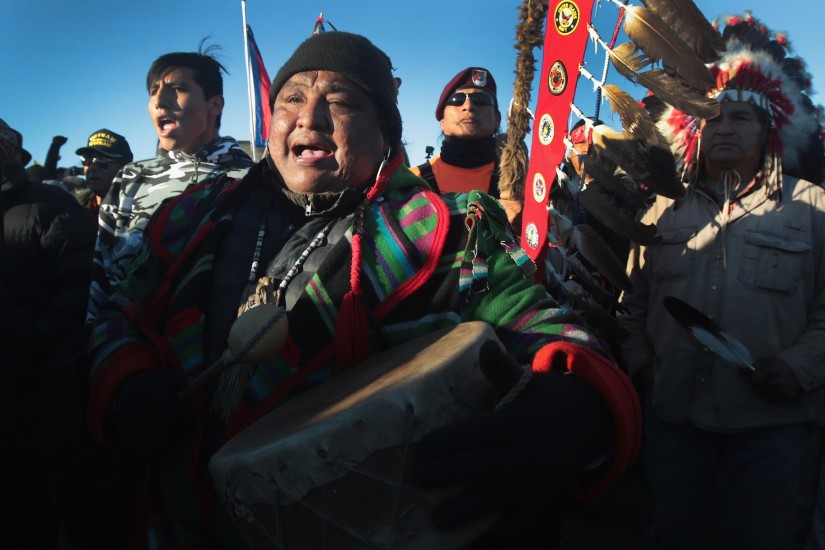Mounted Lakota warriors, their horses resplendent in traditional regalia, charge a line of law enforcement. They gallop headlong, push back the police, pull up only at the last moment, and then circle back for more.The scene could be the Battle of the Little Bighorn, circa 1876. But it’s not. Here, along the banks of the Missouri River, just beyond the boundary of the Standing Rock Sioux reservation in North Dakota, indigenous land and water defenders are standing together to block the Dakota Access Pipeline, which threatens their land, water, ancestral burial grounds, and future generations. They are part of a decades-long struggle to assert and reclaim indigenous lands, jurisdictions, and sovereignties. And they are doing so on ground that has given rise to indigenous resistance for centuries.
For the average American, it’s easy to mistake the resistance at Standing Rock for a one-time re-run: indigenous warriors emerge from the wild, put up a brief, fierce, but ultimately tragic fight before succumbing to progress and providence. Cowboys and Indians II: Pipeline edition.
Vine Deloria Jr, the father of Native American Studies, called this the “cameo theory” of American history. In this version of events, indigenous people are cast in fleeting roles — movie set extras in the grand drama of American progress — only to be dropped from the next episode’s storyline.
But such a narrative obscures the fact that indigenous people — not only in the United States, but across the settler colonized Angloworld in Australia, Canada, and New Zealand — have starred in a series of long-running, quietly successful movements to oppose natural resource extraction and neoliberal colonization.
At Standing Rock and across indigenous territories, indigenous peoples are resisting hundreds of years of dispossession, subjugation, and elimination committed in the name of capitalist accumulation and white possession. As indigenous people put their bodies on the line to resist the Dakota Access Pipeline, they are fighting for their sovereignty while offering an alternative relationship to land, water, and each other.
The fight for our shared future is on.
Remember Wounded Knee
In the United States, the modern roots and spiritual center of indigenous struggle are interred at the village of Wounded Knee on the Oglala Lakota Nation’s Pine Ridge Reservation. There, on December 28, 1890, the Seventh Cavalry intercepted a band of some four hundred Miniconjou and Hunkpapa Lakota from the Cheyenne River and Standing Rock reservations under the leadership of Chief Bigfoot, and ordered them to camp along the banks of Wounded Knee Creek.
The Lakota were followers of the prophet Wovoka’s Ghost Dance movement, which taught that the dead would return, the colonists would be driven off, and tribes would be united, bringing peace and prosperity to the dispossessed. The movement inspired indigenous people across the continent, while fomenting fear among settlers along the frontier.
